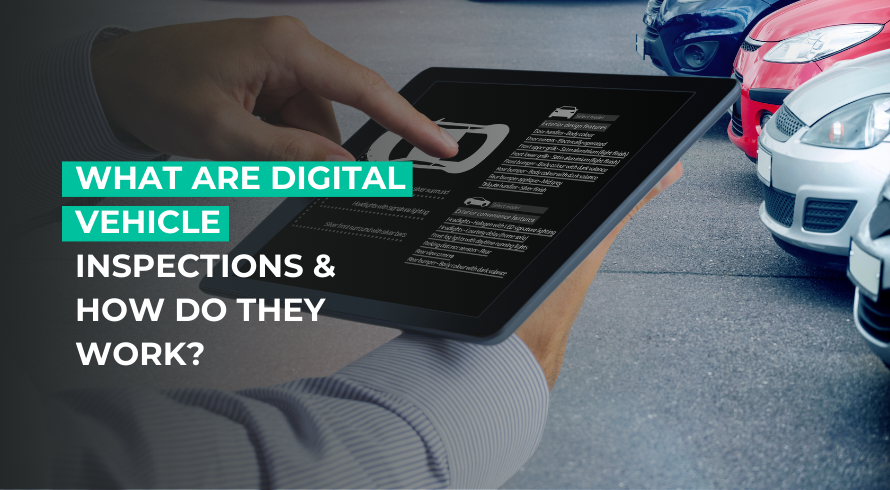The clipboard is dead and digital inspections are the new tool everyone’s talking about. However, shops are still wondering how to use them and things are changing fast in the auto industry. Today’s customers expect clarity, speed, and proof. That’s why more shops are switching to digital vehicle inspections (DVIs). A smarter, faster way to communicate vehicle health.
Instead of handwritten notes, digital inspections use phones or tablets to create clear, visual reports that can be shared instantly with customers. Whether you’re a seasoned shop owner or a technician just hearing about it, this guide breaks down what DVIs are, why they matter, and how they work.
What Is a digital vehicle inspection?
A digital vehicle inspection is a modern way to check a car’s condition using software or mobile tools. Rather than writing notes on a clipboard, technicians use a tablet or phone to go through an inspection checklist, take photos or videos, and record any issues.
This process produces a digital vehicle report. It is often color-coded (green, yellow, red) to show what’s working and what needs attention. These reports are easy to read and can be sent to the customer by text or email, helping them make informed decisions quickly.
Most automotive digital inspections are handled through shop management software built for vehicle inspection technology. This not only simplifies the process but keeps everything stored securely for future reference.
Why switch to digital inspections?
A survey by the AAA revealed that two out of three car owners didn’t trust auto repair shops and felt like they were presented with higher repair bills than justified. Another concern was the poor service quality forcing customers to visit shops multiple times.
How it helps auto repair shops
- Vehicle inspections reduce the time spent writing notes or calling customers.
- Everything’s done on the spot, with no paperwork and improved efficiency.
- A detailed digital report with photos builds transparency and trust with customers.
- Customers are more likely to approve work when they understand the issue.
- Vehicle inspections let you see how technicians are conducting inspections.
How it helps auto repair customers
- No guessing. View photos, videos, and straight facts for better understanding.
- Quickly and easily approve work from their phone in seconds.
- Plan and schedule future services with confidence.
How do digital vehicle inspections work?
A technician spots worn brake pads, takes a photo, and marks them red in the DVI app. The system builds a digital inspection report and sends it to the customer. They open it, see the photo, and approve the work with a tap. The repair begins without confusion and back-and-forth. Here’s a step-by-step on how it works:
1. Create a checklist
Use a standard or custom inspection list tailored to the vehicle or service. This can be targeted to a specific repair or even a seasonal inspection checklist for fall. The technician will create a checklist of all the items covered in the inspection. This could include simple tasks such as checking the oil, brake fluid, suspension, or more advanced tasks such as running engine diagnostics or conducting wheel alignment.
AutoLeap also provides certified checklists created by coaches and industry experts with pre-set line items, conditions and more.
2. Open a repair order
Enter customer and vehicle info into your digital vehicle inspection software. This is where basic information like customer name, car make/model, and phone number is added.
3. Complete the inspection
Technicians go through each step, capture media, and mark findings using color codes. Using the app, the technician documents the inspection findings by taking pictures or videos. For instance, they can make a video of a non-functioning tail light or take a picture of a worn-out air filter. The vehicle’s condition can be marked using three colors—green, yellow, and red. Green means all is good, yellow indicates a slight problem, and red indicates that a part requires urgent attention.
4. Send the digital vehicle report
The system generates a shareable report that’s sent to the customer via text or email. This report summarizes all the findings from the inspection and sends them to the customer. In this menu, you can also view the inspection history for the vehicle. Accompanied with proper media, this could allow you to look at a vehicle’s repair history and notice something that would have not been discovered otherwise.
5. Customer reviews and approves
They view the report and approve, defer, or decline the recommended work.
This simple process helps shops avoid errors, speed up workflows, and deliver consistent results with every job.
Advantages of using DVI tools for repair shops
- Higher approval rates for services and increased average repair order size.
- Consistency with a step-by-step checklist for all your technicians.
- No lost notes with everything logged automatically in the system.
- Improved communication with customers without needing to call.
- Boosts your credibility and results in a better shop image.
Advantages of automotive digital inspections for customers
- Visual proof and images help them trust your recommendations and increase transparency.
- They have the flexibility to approve or decline services from anywhere.
- DVIs help track vehicle condition over time and provide long-term insights.
- Less stress.No pressure in the waiting room.
Wrap-up: Modern inspections that work for everyone
Vehicle inspection tools are changing the way repair shops work and communicate. They make life easier for techs, reduce admin time, and help customers feel more confident in their choices.
Whether you run a busy shop or just want to deliver better service, if you’re still conducting inspections without software, you’re losing precious revenue. Automotive digital inspections can be your edge. Customers appreciate transparency. And shops see better results across the board.
FAQs
What are the three types of vehicle inspections?
The three main types of vehicle inspections are safety inspection— which includes inspections like BIT inspection, multi-point inspections— emissions inspection, and pre-purchase inspections.
How much should a full vehicle inspection cost?
You should budget between $50 and $200 for a thorough car inspection. Extensive pre-purchase inspections that include a thorough engine and road test may be more costly.
What is included in a full vehicle inspection?
Full vehicle inspection is performed by automotive professional and licensed technicians. They thoroughly inspect numerous vehicle parts, important for vehicle safety. These are checked for function and emissions compliance.
How long does a vehicle inspection take?
A vehicle inspection usually takes 60 to 120 minutes. It can take longer depending on vehicles’ condition and mechanic’s schedule.









